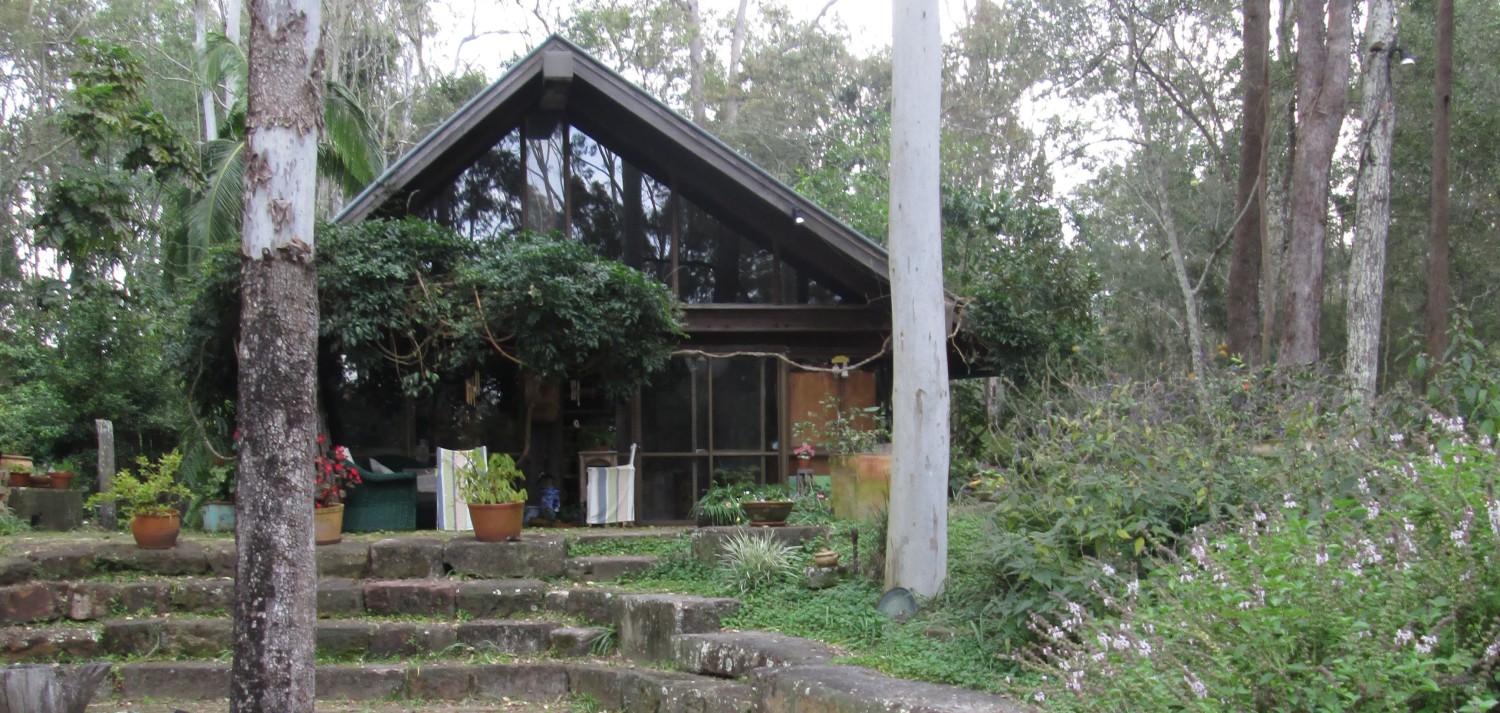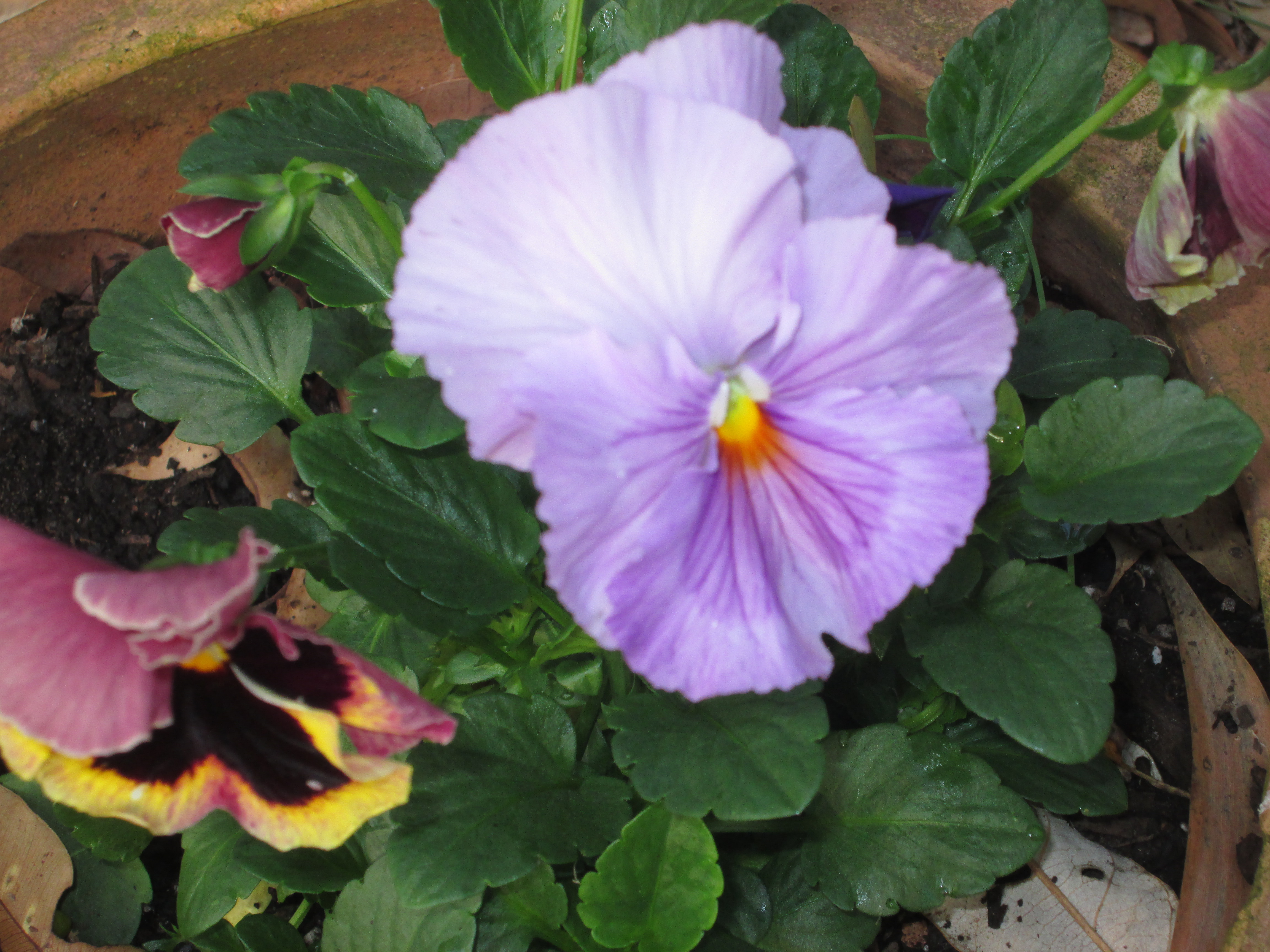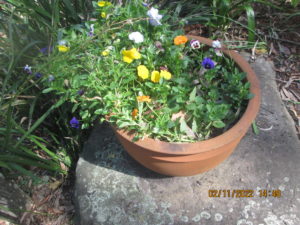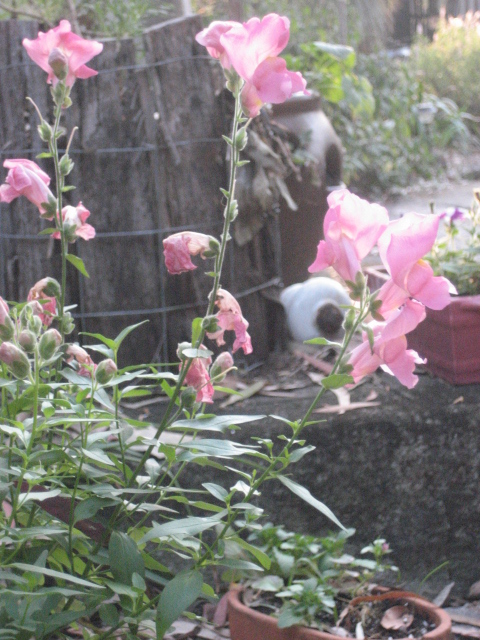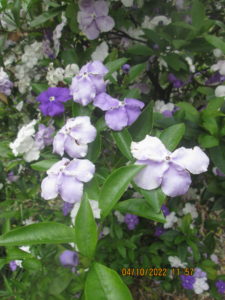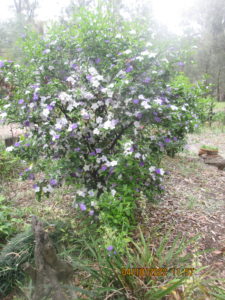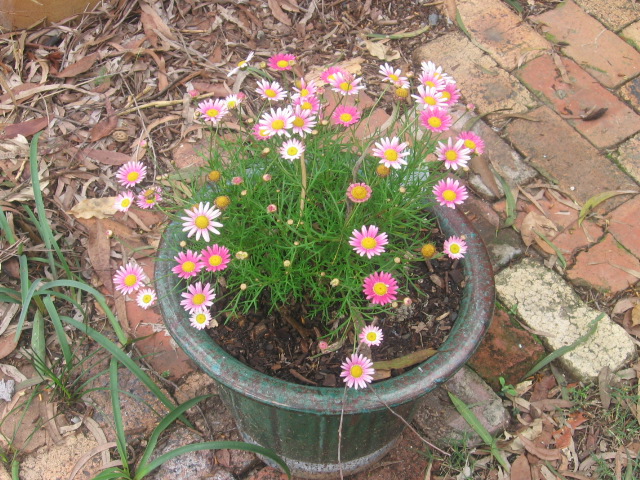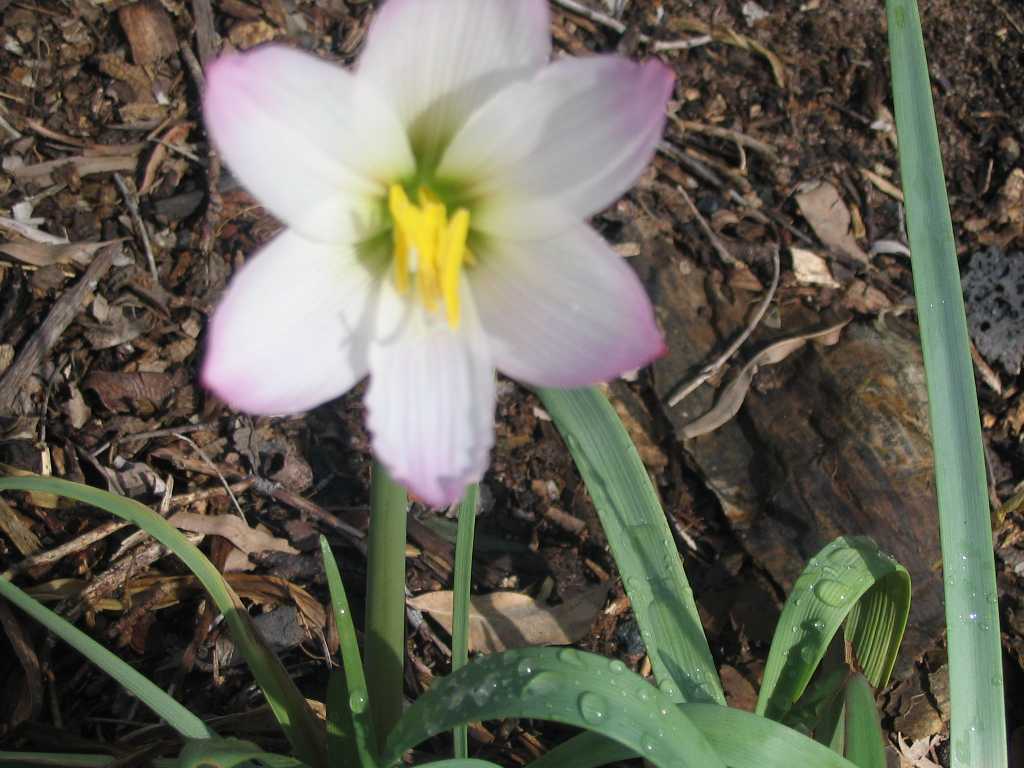___________________________________________________________________________
Note: I would like to share with you through these few words, photographs and hyperlinked websites, a 3 Dimensional experience as though you were actually there with us. Click on any photograph and it should enlarge to different size ….. at least half screen or size full screen. It will be clearer in detail than the photo on the post. It will be as if you were really there looking at the actual scene. You are an arm chair traveller with us.
____________________________________________________________________________
From Wikipedia, the free encyclopedia: The cottage garden is a distinct style of garden that uses an informal design, traditional materials, dense plantings, and a mixture of ornamental and edible plants. English in origin, the cottage garden depends on grace and charm rather than grandeur and formal structure. Homely and functional gardens connected to working-class cottages go back several centuries, but their reinvention in stylised versions grew in 1870s England, in reaction to the more structured and rigorously maintained English estate gardens that used formal designs and mass plantings of brilliant greenhouse annuals.
The earliest cottage gardens were more practical than their modern descendants — with an emphasis on vegetables and herbs, along with some fruit trees, perhaps a beehive, and even livestock. Flowers were used to fill any spaces in between. Over time, flowers became more dominant. The traditional cottage garden was usually enclosed, perhaps with a rose-bowered gateway. Flowers common to early cottage gardens included traditional florist’s flowers, such as primroses and violets, along with flowers chosen for household use, such as calendula and various herbs. Others were the old-fashioned roses that bloomed once a year with rich scents, simple flowers like daisies, and flowering herbs. Over time, even large estate gardens had sections they called “cottage gardens”.
Modern-day cottage gardens include countless regional and personal variations of the more traditional English cottage garden, and embrace plant materials, such as ornamental grasses or native plants, that were never seen in the rural gardens of cottagers. Traditional roses, with their full fragrance and lush foliage, continue to be a cottage garden mainstay — along with modern disease-resistant varieties that keep the traditional attributes. Informal climbing plants, whether traditional or modern hybrids, are also a common cottage garden plant. Self-sowing annuals and freely spreading perennials continue to find a place in the modern cottage garden, just as they did in the traditional cottager’s garden.
….. The view from the arbour where you look down into a small amphitheatre. On the top side of the amphitheatre is the cottage garden area. We have only fully put this in July 2015. Before that, we were dependent on a weekly supply of sullage water. Since September 2014 we have put down a bore to 36 metres and struck abundant water. With a branching irrigation pipe, bore water can now be brought to taps on the topside and bottom side of our house. Sprinkling can be left on different areas for several hours at a time for minimal cost. Having abundant water for our garden has greatly changed how we do gardening ……
 ….. Since September 2014 we have put down a bore to 36 metres and struck abundant drinkable water ……
….. Since September 2014 we have put down a bore to 36 metres and struck abundant drinkable water ……
 ….. Different areas of our cottage garden shown above and below ……
….. Different areas of our cottage garden shown above and below ……
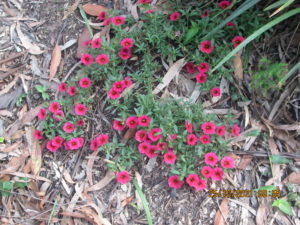
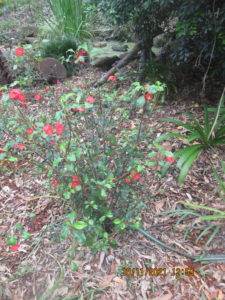
________________________________________________
Specific Cottage Garden Plants:
….. Specific plants are not generally named but the photos show the rich changing colours and the low growing plants ……
Yellow Cosmos or Cosmos sulphureus is a species of flowering plant in the sunflower family Asteraceae, also known as sulfur cosmos and yellow cosmos. It is native to Mexico, Central America, and northern South America, and naturalized in other parts of North and South America as well as in Europe, Asia, and Australia.[2][3][4][5][6][7][8]
This plant was declared invasive by the United States Southeast Exotic Pest Plant Council in 1996.[9] The flowers of all Cosmos attract birds and butterflies, including the monarch butterfly. (From Wikipedia, the free encyclopedia):
Jump to navigation Jump to search
| Cosmos sulphureus | |
|---|---|
 |
|
| Scientific classification |
|
| Kingdom: | Plantae |
| Clade: | Tracheophytes |
| Clade: | Angiosperms |
| Clade: | Eudicots |
| Clade: | Asterids |
| Order: | Asterales |
| Family: | Asteraceae |
| Genus: | Cosmos |
| Species: |
C. sulphureus
|
| Binomial name | |
| Cosmos sulphureus
|
|
| Synonyms[1] | |
|
|
 A Native Voilet planted in a big pot.
A Native Voilet planted in a big pot.
A delicate and sweet, easy to grow, small violet with distinctive rounded leaves. It’s a very pretty groundcover with pale mauve and white flowers that blossom on thin stems throughout the year. It prefers damp shady spots in the garden, next to ponds or along pathways or edges where it can spill over. It looks just as gorgeous in pots and hanging baskets.
From the website: Better Homes and Gardens
One of the most popular annuals, petunias add mountains of color to garden beds and containers. These tough plants are capable of producing loads of blooms all season long and come in a wide variety of colors and patterns. While most petunias available nowadays are hybrids, they used to come in roughly two general classes, Grandiflora and Multiflora. Grandiflora petunias were bred for their large, showy blooms while multiflora were bred for quantity over quality, producing numerous smaller blossoms.
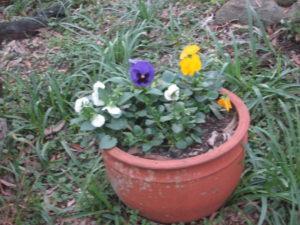
Pansies in a big clay pot in the middle of winter = June in Australia ….
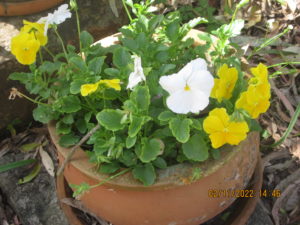
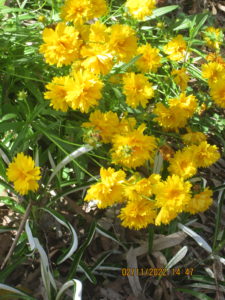
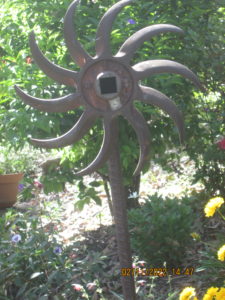
Metal Sculpture as you walkalong the path to the front door of the house.
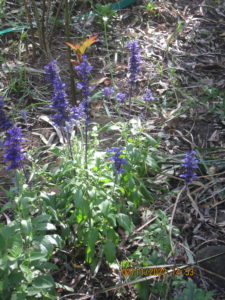
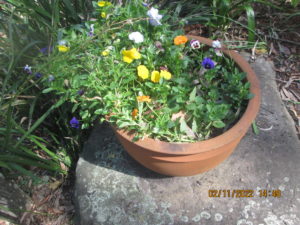

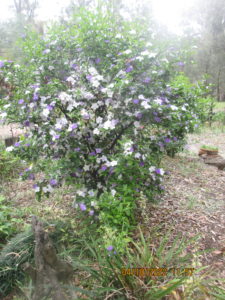
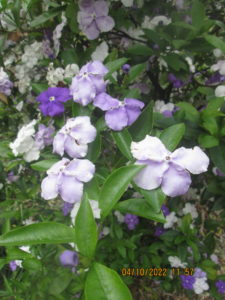
Toxicologic studies performed with members of this genus have demonstrated that all parts of the plant are toxic, but unequally so. The leaves, flowers and stems appear to be the least toxic, whereas the berries are the most. Poisonings related to Brunfelsia are extremely rare and very few could be found in the literature. The best documentation regarding Brunfelsia related intoxication comes from A toxicological investigation of the garden shrub Brunfelsia calcyina var. floribunda (yesterday-today-and-tomorrow) in three species, by Charles B. Spainhour, Jr., Robert A. Fiske, Wayne Flory, and John C. Reagor:
_______________________________________________________________________________

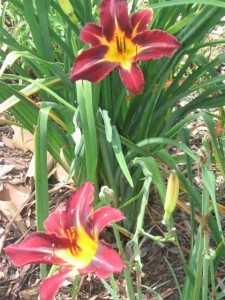
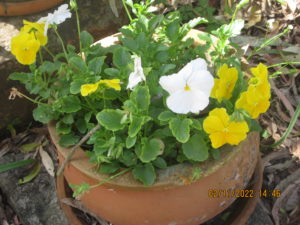

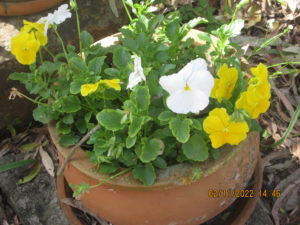
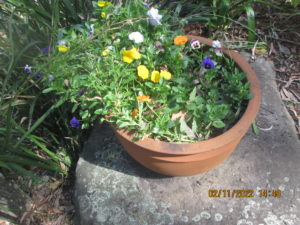
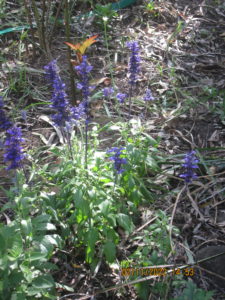
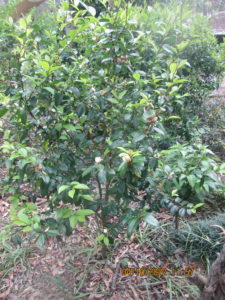

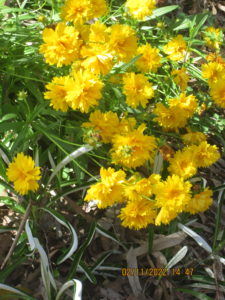
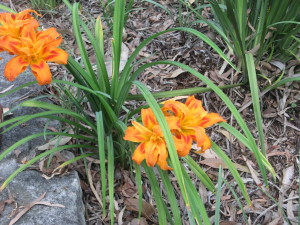
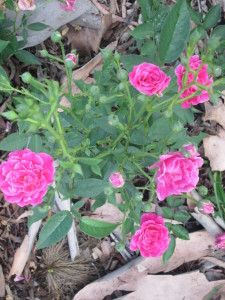
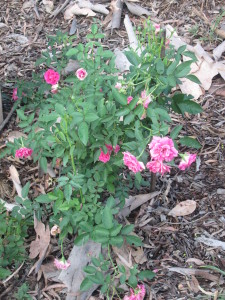
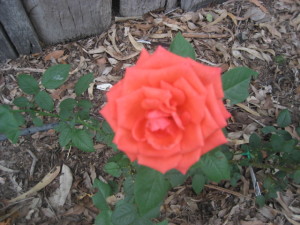
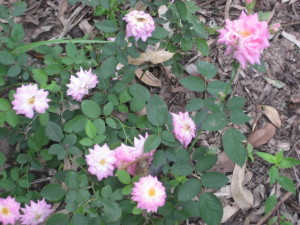
________________________________________________________________________
Storm Lilies as part of Cottage Gardens:
For months on end, there were numerous storm lilies planted amongst the low garden plants. They were whorled grey-green straplike 300 mm long-limped leaves. It had been many months between heavy rain. A big summer storm came and in a week the whorled grey-green straplike leaves suddenly became very erect green straplike leaves. A central flower stalk emerged with a bulbous flower head. In several more weeks, the bulbous flower heads burst open into the pink trumpet-like flowers shown below. In another couple of weeks, the flower heads formed into rounded seed pods. A month later, the seed pods split open and released many flat windborne seeds. These seeds then produce an abundant supply of new storm lilies wherever they fall.
See this website: Images for storm lilies Australia
______________________________________________________
SCULPTURE:
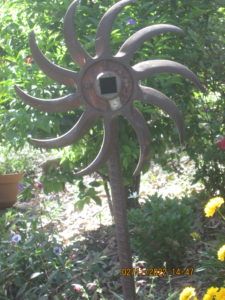
__________________________________________________________
See the next post: Post 7: Permaculture Garden Room
